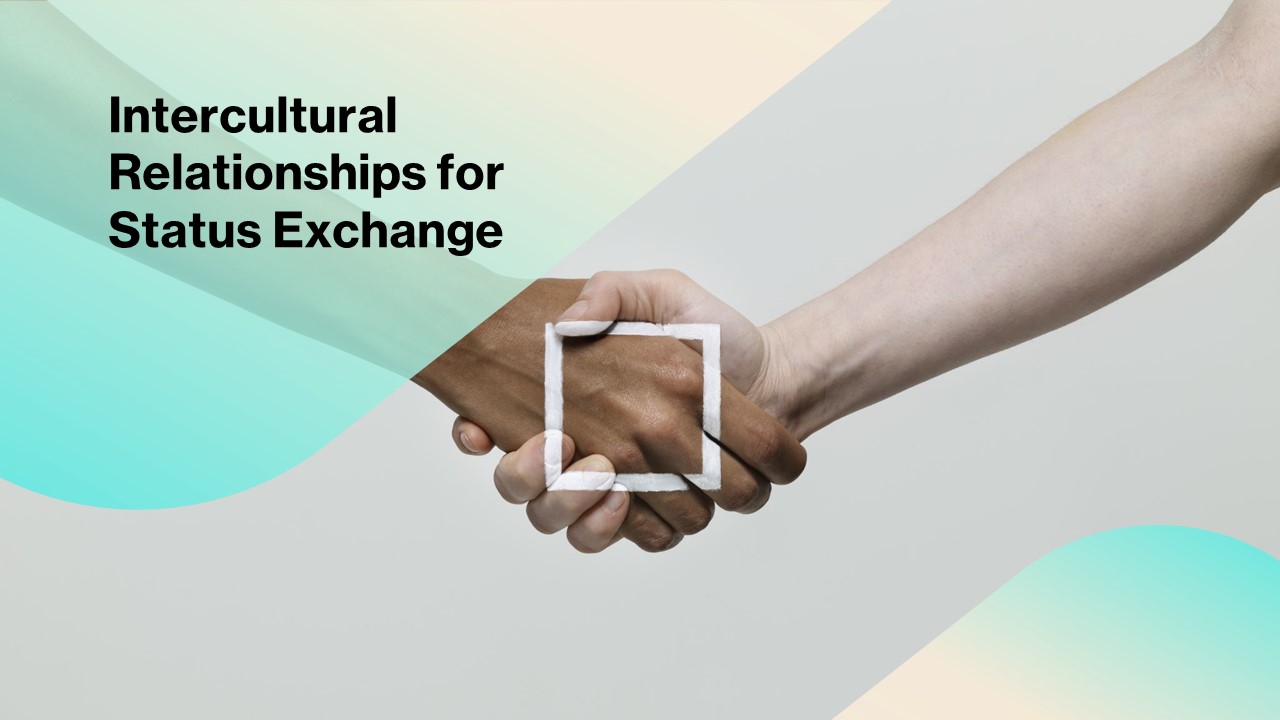Intercultural relationships are becoming more widespread in modern multicultural societies. Several theories of interracial romantic and marital relationships have been developed in sociology and social psychology. Among those are the theories of status-caste exchange, opportunity theory, ethnic identity, and interpersonal development.
In-group Versus Out-group Impediments to Intercultural Relationships and Marriages
The divisions between in-groups and out-groups have been pervasive throughout human history. Cultural communities frequently favor their own group and its members while remaining vigilant and wary of other cultural groups. They liked those who were familiar and did not trust those who were unfamiliar. They were predisposed to seeing those from their own cultural in-group with positive bias and those from other cultural “out-groups” with negative bias. These cultural stereotypes precipitated such preferences for prospective partners of the same race, ethnicity, and language over “others” who were unfamiliar. (See other posts about How does mere exposure induce love attraction? and What are cultural stereotypes?).
Consequently, they preferred to marry those of their own cultural group (in-group) and were reluctant to get into relationships with those “others.” Such long-standing traditions were preserved by extended families. They preferred the marriages of their children to those from their cultural group (race, ethnicity, religion). They frequently preferred consanguinity marriages between kin relatives.
Homogamy is a widespread tendency in romantic and marital relationships (see another post on homogamy and love). It is a definite corollary of in-group biases.
Why, despite various social and psychological barriers, have men and women been married across cultural groups?
Status Exchange Motivation in Intercultural Relationships Marriages
Throughout history, various cultural groups have frequently had different social and economic statuses. Some of them were more privileged than others. Some tribes, families, communities, societies, and countries were wealthier than others or had other social advantages. For example, some countries are more economically developed or more civilized than others. Consequently, people enjoyed these benefits. Even within countries, different social and cultural groups are more honored and fortunate than others. The Indian caste system is one of these examples.
Because of such social differentiation, marriage with someone of a higher status has been advantageous. Therefore, the status-exchange motivation is among the strongest reasons for marrying up a man or woman from a wealthy family, tribe, or ethnic group. Generally speaking, people of lower socioeconomic status are more likely to seek out marital relationships with others of higher status to make up for their low status (Rosenfeld, 2005; Sassler & Joyner, 2011; Schoen & Wooldredge, 1989).
The social status exchange model of intermarriage was and is still a reality in societies with high social inequality.
Examples of Status Exchange Intermarriages
Studies have provided evidence to support the contention that the status-caste exchange motivation works in many intermarriages. These cases are frequent in Black-White relationships. In other combinations of races and ethnicities, such as Asians, Latinos, and others, these cases are less frequent (e.g., Gullickson & Fu, 2010; Kalmijn, 2010).
Status-caste exchanges in intercultural marriages can be driven by pragmatic motivation. However, an alternative explanation is possible: passionate and romantic idealization can erase cultural differences in the eyes of beholders. The latter can be true at the initial stage of romantic relationships, when men and women believe that “love wins.” Contemporary romantic movies from Hollywood depict many romantic stories, like fairy tales. They inspire many girls—gender stereotypes persist—to marry a prince.
Fairy tales across cultures commonly depict girls’ dreams of encountering a charming prince to love and marry. The girls are typically kind and beautiful, but poor, while the prince is brave, handsome, and rich. The first two qualities of both definitely predispose them to fall in love with each other—the romantic model of love, yet the third qualities of both predispose them to the status-caste exchange model of love. Such a cultural model of love in fairy tales inspired many girls in the past. Modern Hollywood movies continue to inspire these phantasies. The reality of love, however, does not frequently work this way.
(Karandashev, 2022).
Doubts in Social Exchange Motivation
Some studies, however, express doubts about the validity of such social exchange explanations. The findings for minority groups in the United States, such as Hispanics, Blacks, and Asians, are inconclusive. Different interpretations of Black–White intermarriage are possible. Inequality between the Black and White racial groups, as well as gender differences, can be factors that interact with one another. Some analyses call into question the status-caste exchange theory (Rosenfeld, 2005).
Passionate idealization and true, genuine, and heartfelt love can play an important role in such presumably social exchange in romantic and marital relationships. Maybe Hollywood movies tell us the reality, not only beautiful dreams and illusions.
Socio-economic Equality and Social Status Exchange in Relationships
The social status exchange model of intercultural marriages will likely be on the decline in modern societies. The rise in social, economic, and educational equality in many modern societies is likely to make status-exchange motivation less important for people who marry from different cultures.
